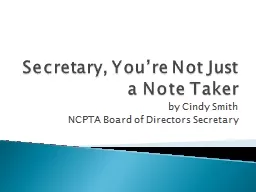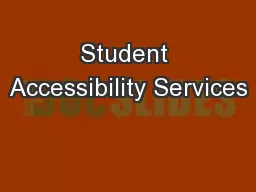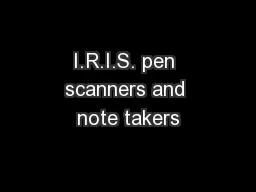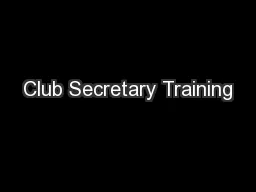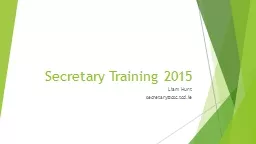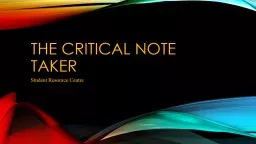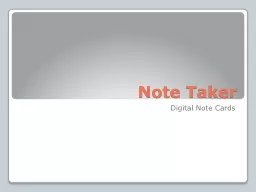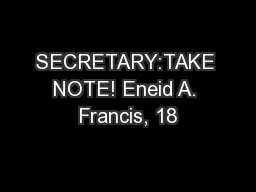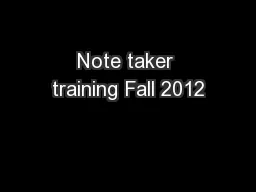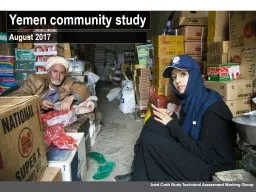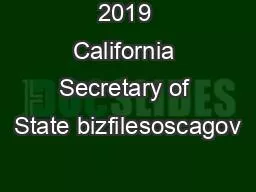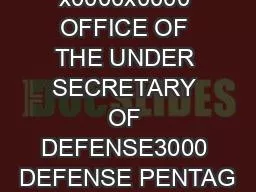PPT-Secretary, You’re Not Just a Note Taker
Author : pamella-moone | Published Date : 2017-06-24
b y Cindy Smith NCPTA Board of Directors Secretary What is a Secretary Your thoughts Official record keeper of the organization Far beyond keeping the minutes Keeping
Presentation Embed Code
Download Presentation
Download Presentation The PPT/PDF document "Secretary, You’re Not Just a Note Take..." is the property of its rightful owner. Permission is granted to download and print the materials on this website for personal, non-commercial use only, and to display it on your personal computer provided you do not modify the materials and that you retain all copyright notices contained in the materials. By downloading content from our website, you accept the terms of this agreement.
Secretary, You’re Not Just a Note Taker: Transcript
Download Rules Of Document
"Secretary, You’re Not Just a Note Taker"The content belongs to its owner. You may download and print it for personal use, without modification, and keep all copyright notices. By downloading, you agree to these terms.
Related Documents

